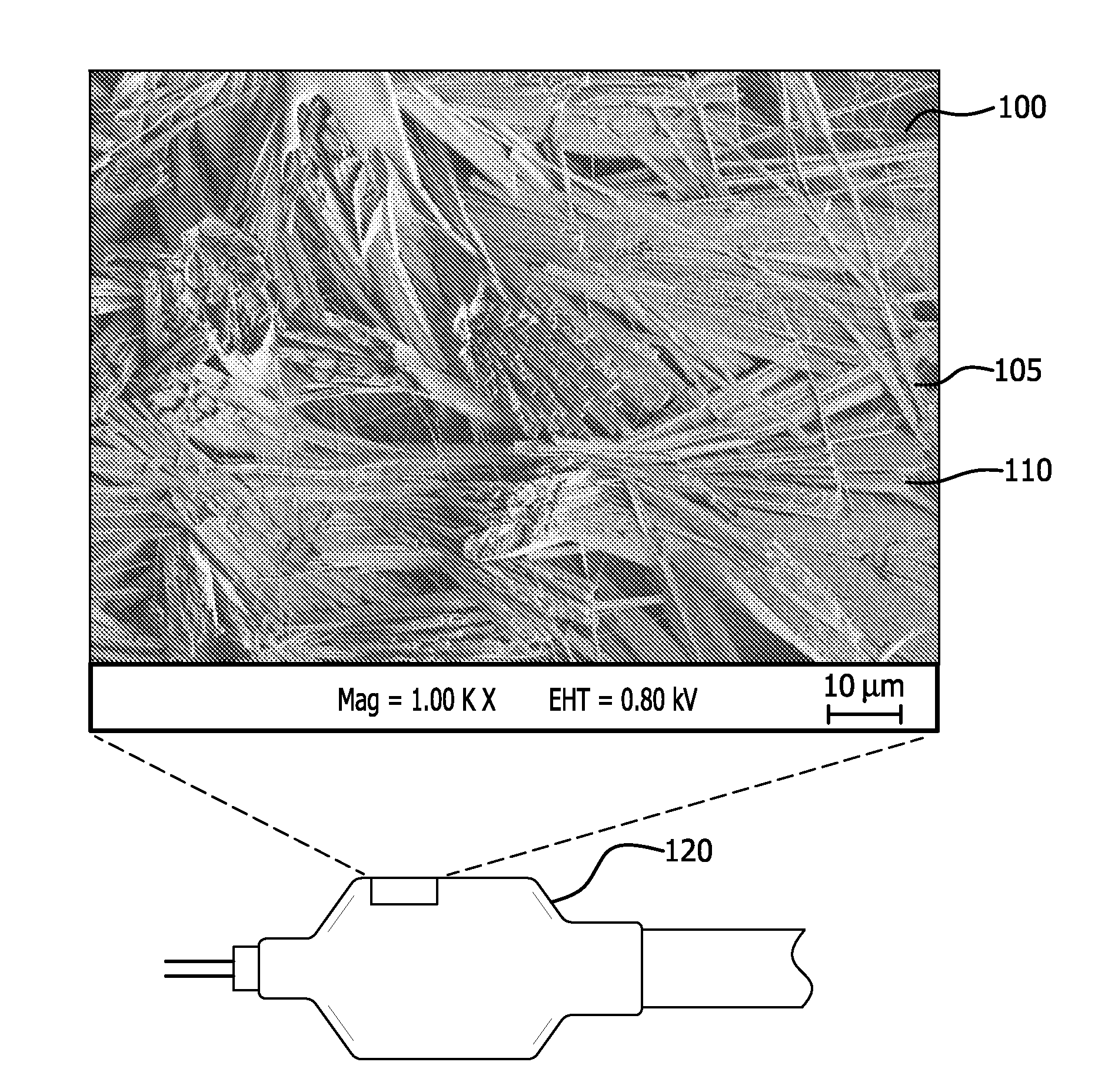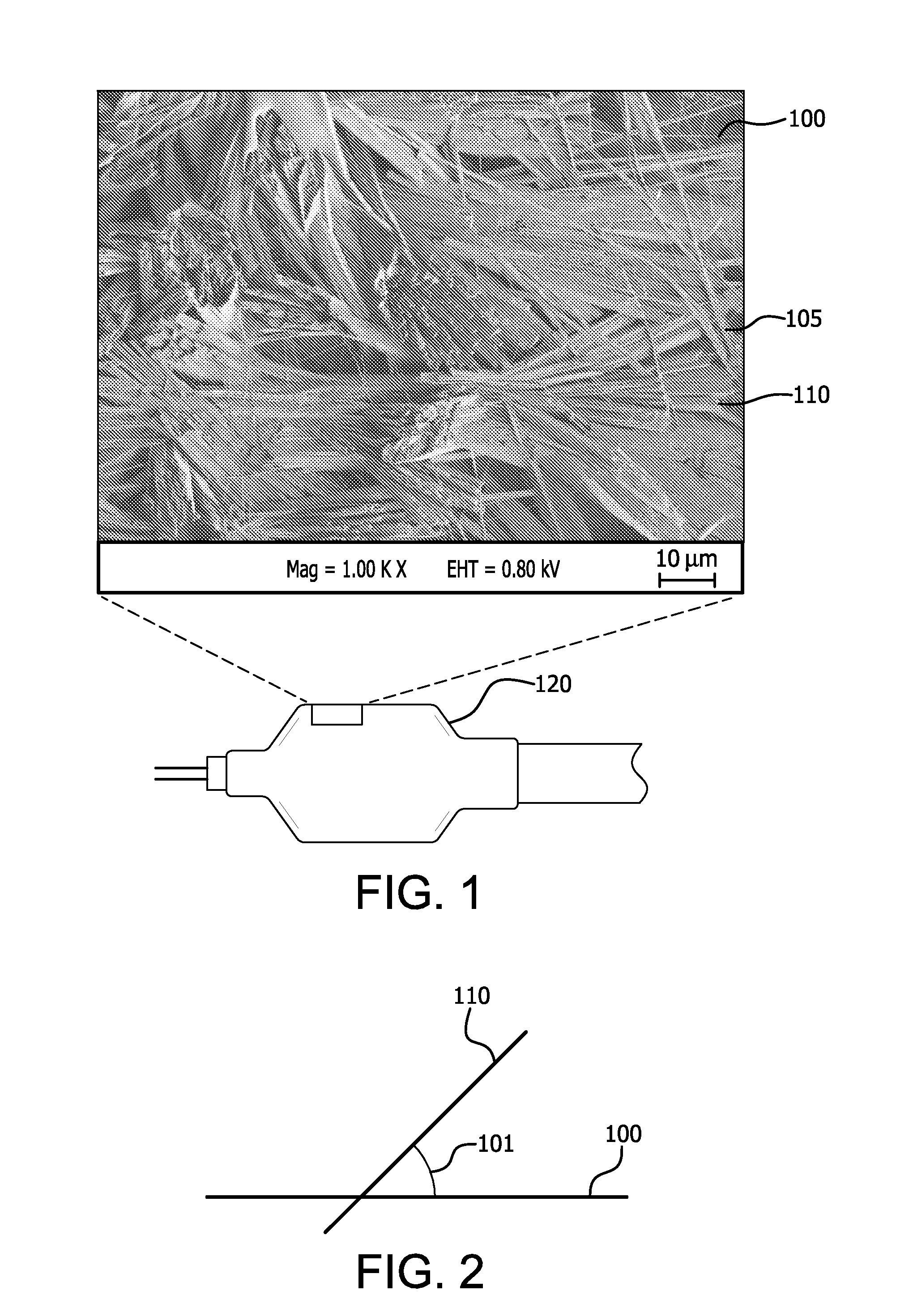Porous composites with high-aspect ratio crystals
a composite material and crystal technology, applied in the field of porous composite materials with high-aspect ratio crystals, can solve the problems of human mortality and morbidity, high variability and unpredictable dosing of drugs to the treatment site using debs, and systemic administration of drugs can produce unwanted side effects, so as to improve the attachment
- Summary
- Abstract
- Description
- Claims
- Application Information
AI Technical Summary
Benefits of technology
Problems solved by technology
Method used
Image
Examples
example 1
[0096]This example describes the preparation of a porous sample substrate comprising ePTFE of a first microstructure comprising very highly elongated fibrils.
[0097]An ePTFE membrane of approximately 0.0002″ thickness was prepared as per U.S. Pat. No. 7,306,729 to Bacino et al., incorporated herein by reference in its entirety. A fluoropolymer adhesive comprising a thermoplastic copolymer of tetrafluoroethylene and perfluoromethyl vinyl ether was prepared generally in accordance with U.S. Pat. Nos. 7,049,380 and 7,462,675 to Chang et al., incorporated herein by reference in their entirety. The ePTFE membrane was cut to approximately 20 mm×50 mm, and was adhered to a glass slide (#48300-025, VWR). An adhesive solution was prepared by dissolving the fluoropolymer adhesive in solvent (Fluorinert FC-75, 3M) at a concentration of approximately 3%. A light coating of the adhesive solution was applied to the glass slide, and the ePTFE membrane was applied and smoothed to remove wrinkles and...
example 2
[0098]This example describes the preparation of a porous sample substrate comprising ePTFE of a second microstructure comprising very highly elongated nodes interconnected by fibrils.
[0099]An ePTFE membrane of approximately 0.0007″ thickness was prepared generally in accordance with U.S. Pat. No. 5,814,405 to Branca et al., incorporated herein by reference in its entirety. The ePTFE membrane was cut to approximately 20 mm×50 mm, and was adhered to a glass slide (#48300-025, VWR) as per Example 1.
example 3
[0100]This example describes the preparation of a nonporous sample substrate comprising nylon.
[0101]A nylon balloon (part number BMT-035, Bavaria Medizin Technologie, Munich Germany) was inflated with air to remove folds and pleats. A 20×50 mm film was cut from the balloon with a razor blade, and taped to a glass slide (#48300-025, VWR) using cellophane tape. The non-porous nature of this substrate is depicted in FIG. 5.
PUM
| Property | Measurement | Unit |
|---|---|---|
| Angle | aaaaa | aaaaa |
| Thickness | aaaaa | aaaaa |
| Diameter | aaaaa | aaaaa |
Abstract
Description
Claims
Application Information
 Login to View More
Login to View More - R&D
- Intellectual Property
- Life Sciences
- Materials
- Tech Scout
- Unparalleled Data Quality
- Higher Quality Content
- 60% Fewer Hallucinations
Browse by: Latest US Patents, China's latest patents, Technical Efficacy Thesaurus, Application Domain, Technology Topic, Popular Technical Reports.
© 2025 PatSnap. All rights reserved.Legal|Privacy policy|Modern Slavery Act Transparency Statement|Sitemap|About US| Contact US: help@patsnap.com



